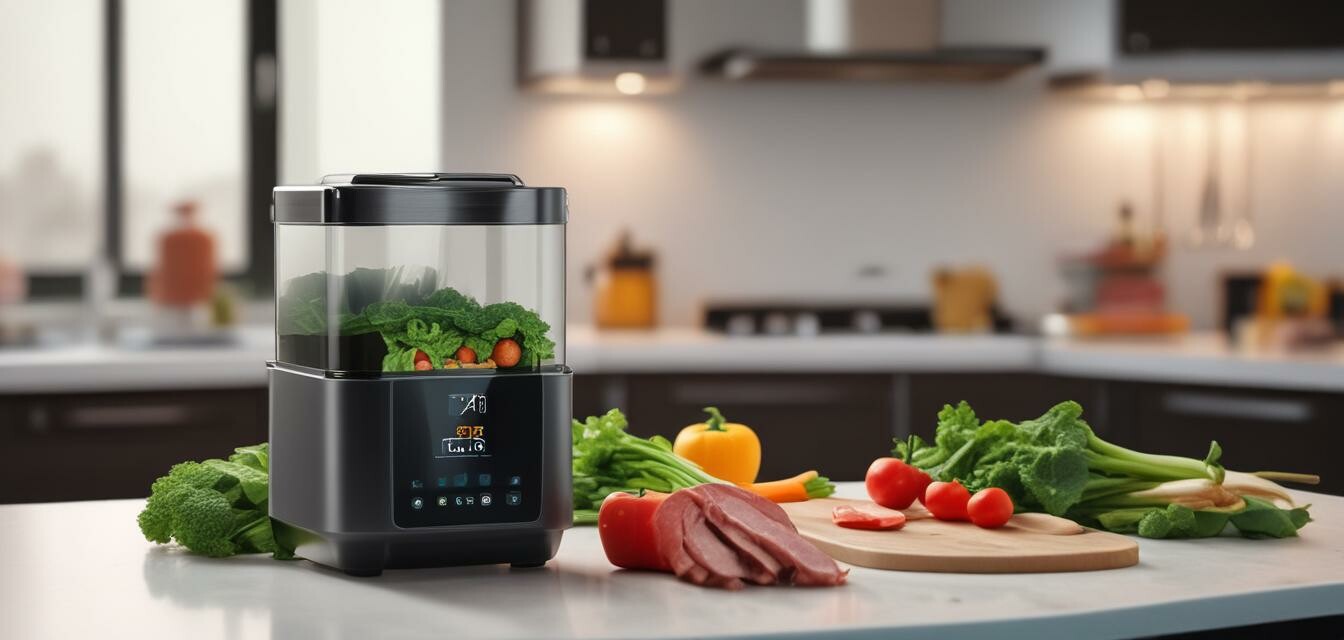
Cooking with New Techniques: Sous Vide for Beginners
Key Takeaways
- Sous vide is a method of cooking in precisely controlled water temperatures.
- This technique enhances flavor and tenderness of foods.
- Essential equipment includes a sous vide machine and resealable bags.
- Begin with simple recipes to master the basic techniques.
- Always ensure food safety by following proper sous vide guidelines.
Sous vide cooking is an exciting technique that offers precision and consistency, allowing home cooks to elevate their culinary skills effortlessly. This method involves sealing food in a bag and cooking it to a very precise temperature in a water bath. In this article, we’ll explore the fundamentals of sous vide cooking, tips for beginners and how you can get started.
What is sous vide cooking?
Sous vide, which translates to "under vacuum" in French, is a cooking method that involves placing food in a sealed bag and immersing it in a water bath at a controlled temperature. This technique ensures thorough cooking while preserving moisture and flavor.
Benefits of sous vide cooking
| Benefit | Description |
|---|---|
| Precision | Cook food to the exact desired doneness without overcooking. |
| Tenderness | Meat retains its moisture, resulting in a more tender dish. |
| Flavor | Enhanced flavor retention due to vacuum sealing. |
| Convenience | Set it and forget it, allowing other preparations. |
Getting started with sous vide
To begin your sous vide journey, you’ll need a few basic items:
- Sous vide machine: This is your primary tool for maintaining the water temperature.
- Resealable bags or vacuum seal bags: These are used to pack your food securely.
- Water container: A container to hold the water where you will cook the food.
Steps to sous vide cooking
- Prepare your sous vide machine according to the manufacturer's instructions.
- Season your food and place it in the resealable or vacuum bag.
- Suck out the air from the bag or use the vacuum feature.
- Set the sous vide machine to the desired cooking temperature.
- Submerge the bagged food in the water bath and cook for the time recommended for your specific recipe.
- Once finished, remove from the bag and sear if needed for a crust.
Tips for beginners
Beginner Tips
- Start with simple proteins, such as chicken breasts or steak.
- Use a thermometer to check early on if you're hitting the right temperatures.
- Dive into more cooking techniques to enhance your learning.
- Always label your bags with cooking times and temperatures to avoid confusion.
- Keep a close eye on cooking times; over time, you'll get a feel for it.
Common mistakes to avoid
As with any cooking method, there are common pitfalls that new sous vide enthusiasts may encounter:
- Not leaving enough space between bags in the water; ensure proper circulation.
- Using too high temperatures for delicate items such as fish.
- Neglecting food safety guidelines; always follow recommended cooking times.
- Not preheating the water bath; this can lead to uneven cooking.
Pros
- Enhances the flavor and tenderness of food.
- Allows for cooking multiple portions at once.
- Reduces chances of overcooking.
- Can prepare meals ahead of time, saving time during busy hours.
Cons
- Initial investment in equipment can be costly.
- Learning curve for achieving desired results.
- Longer cooking times compared to traditional methods.
Delicious recipes to try
Once you're comfortable with the technique, try experimenting with the following types of recipes:
- Sous vide chicken breast with herbs
- Sous vide steak with garlic and rosemary
- Sous vide eggs for a perfect breakfast
- Sous vide vegetables for vibrant flavors
Conclusion
Sous vide cooking is an innovative method that can bring exciting new flavors and techniques to your kitchen. By following these steps and tips for beginners, you can confidently embark on your sous vide journey. For more cooking tips, check our Cooking Tips & Techniques section.